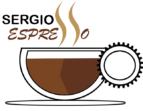Introduction
Welcome to a key segment of our blog that caters to candidates preparing for interviews in the FAANG universe and beyond. As a product manager (PM), you’re likely to be challenged with a range of questions to evaluate your creativity, technical understanding, and problem-solving prowess. One such question you may face is: “How would you design a product to help people who need a blood donation?” Understanding how to dissect this question through structured frameworks is crucial; not only does it demonstrate logical thinking, but also showcases your ability to approach problems methodically—a vital trait for any successful PM.
Detailed Guide on Framework Application
Picking the Right Framework
One suitable framework for addressing this question is the CIRCLES Method™, which offers a comprehensive approach to tackle product design questions. Let’s walk through how to apply this framework step by step.
Comprehend the Situation
First, clarify the problem and the target user. We know our users are individuals in need of blood donations. Are there specific groups within this category, such as patients with chronic diseases, accident victims, or surgery patients?
Identify the Customer’s Needs
Next, uncover the needs of these users. They require prompt and reliable access to compatible blood types, possibly information about blood safety, and a way to connect with potential donors or blood banks.
Cut Through Prioritization
Given the range of needs, prioritize them based on factors like urgency, impact, and feasibility. Ensuring the availability of the right blood type in emergencies may come first.
List the Solutions
Brainstorm various solutions. One might be a mobile app that notifies registered users when their blood type is needed nearby. Another could be a tracking system to manage blood inventory across hospitals.
Evaluate Trade-offs
Assess the pros and cons of each solution. A donor notification app can be quick to implement but might not ensure immediate availability of blood. An inventory system requires more integration but offers a more systemic solution.
Scope the Product Requirements
Define features for the most viable solution. If we choose the mobile app route, essential features might include a user registration module, notification system, compatibility checker, and location-based services.
Solve through Wireframes/Prototypes
Create rough sketches to visualize the app flow. For example, illustrate the user’s journey from receiving a notification about the need for their blood type to confirming their donation appointment.
Conclude with Recommendations
End with a compelling product proposal. Recommend developing a mobile platform that connects potential donors with local blood banks, backed by a robust notification system to ensure timely donations.
Fact Checks and Assumptions
When building a case for the app, reference real-world data when possible, like the average time it takes for blood to be available after a donation request. Also, make educated assumptions—for instance, the potential of increased donor registration with ease of access through mobile technology.
Effective Communication Tips
Communicate your thoughts in a structured and concise manner. Use relatable analogies to explain technical concepts, maintain eye contact, and be prepared to answer follow-up questions with the same structured approach.
Conclusion
In conclusion, the CIRCLES Method™ offers a strategic roadmap to design a product thoughtfully and thoroughly. By adhering to this framework, you’re equipped to deliver answers that bring clarity, showcase your product vision, and ultimately set the stage for a captivating product management narrative. Embrace this practice wholeheartedly to sharpen your product instincts and ace that FAANG interview!
“`
